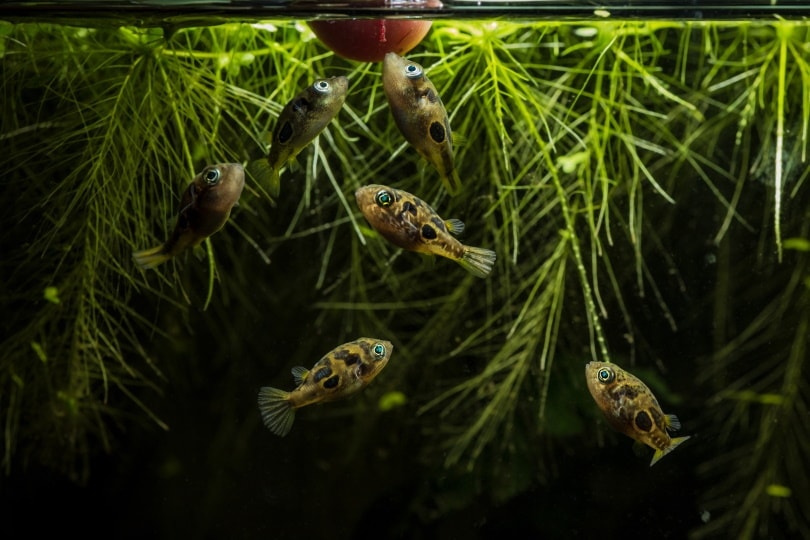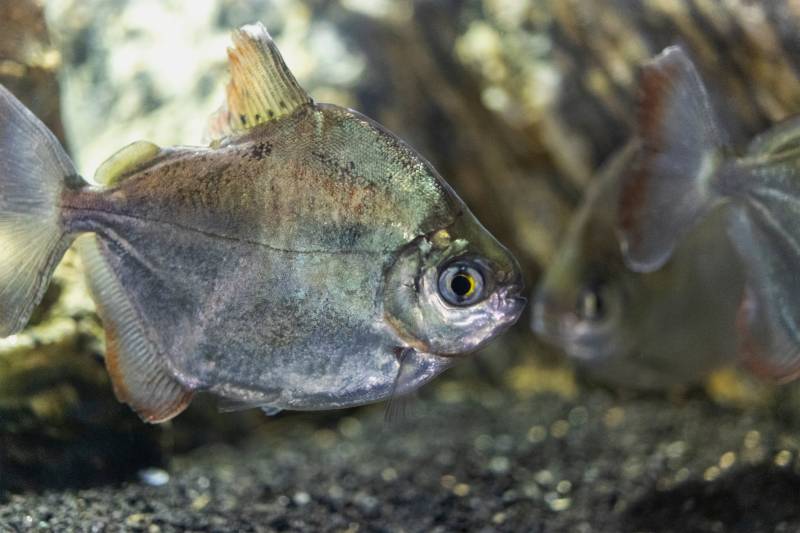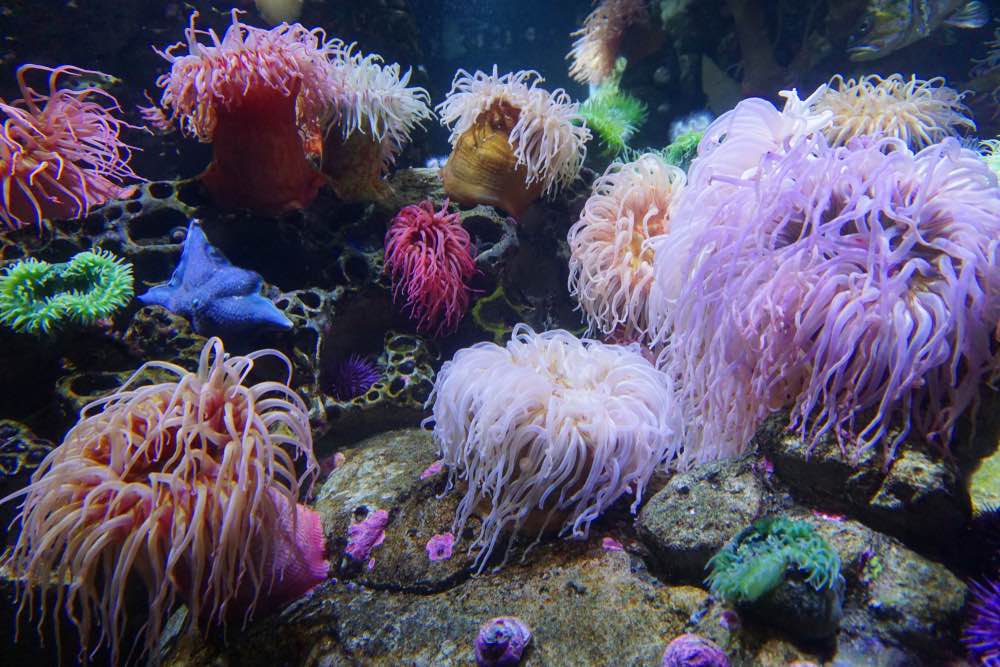What Do Seahorses Eat? Diet Facts & Feeding Tips

Updated on
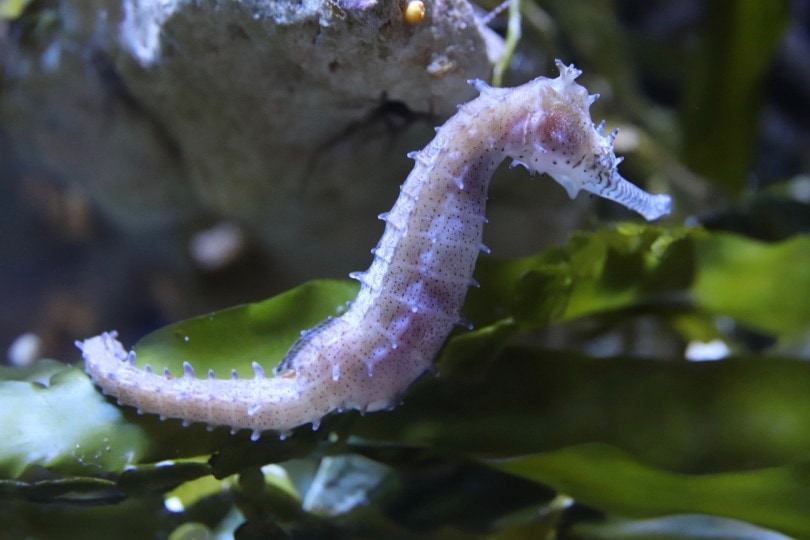
Click to Skip Ahead
There’s little doubt that the seahorse is one of the most mind-boggling ocean creatures. But whether you’re simply curious about what these fish eat in the wild or if you’re trying to determine how to care for one, we break down everything that you need to know here.
Not only do these creatures look different than just about everything else in the ocean, but they also hunt differently and have a unique dietary tract!
Seahorse Diet
In the wild, seahorses feed on plankton and tiny crustaceans. These can include amphipods, decapods, mysids shrimp, algae, and more. They only eat small foods, and they need to eat near constantly to stay alive.
In captivity, you can feed a seahorse frozen crustaceans, but they do better with and prefer live food. This can be a challenge in captivity, but you have a few options. First, you can repeatedly introduce more live food into the aquarium as needed.
Second, you can choose to create an environment where those crustaceans can reproduce on their own at a rate where your seahorse won’t completely deplete their supply.
While this requires a larger enclosure and can be more challenging to set up, once you do, it enables you to take a step back instead of always worrying about adding the right amount of food for your seahorse.

How Often Do Seahorses Eat?
An adult seahorse needs to eat anywhere from 30 to 50 times in a single day. While that might seem like an excessive amount, it’s because a seahorse has no stomach. That means they don’t have anywhere to store food between meals, so they need to eat all the time.
Furthermore, a baby seahorse needs to eat about 3,000 times a day, which means they need to eat constantly.
This is why if you plan on getting a seahorse in your aquarium, you need to have a setup where their food is naturally present in the ecosystem, or you need to deposit a whole host of crustaceans at one time. Also, you need to let them hunt for their food just like they would in the wild.
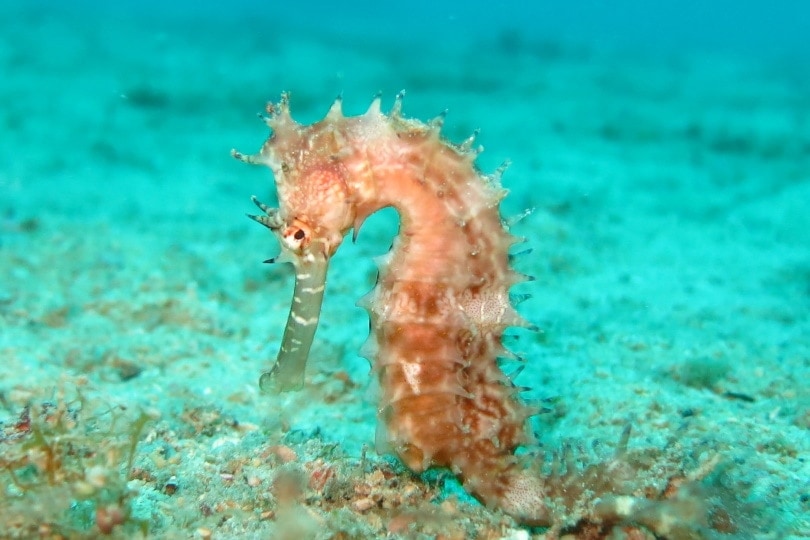
How Do Seahorses Hunt?
Considering how slow a seahorse swims and how often they need to eat, it’s natural to wonder how they get enough food. The truth of the matter is that they’re among the most effective hunters in the world.
They prefer to anchor themselves in vegetation and wait for prey to approach. While they aren’t strong swimmers, they can swim quietly. This enables them to sneak up on their prey as needed.
Helping them further is the fact that they can swim in any direction. Since most fish can’t swim straight up or straight down, the seahorse can move in ways that their prey doesn’t expect.
Once they get close enough, they rotate their head close to their prey and slurp them up! Not only does their head have a wide rotation range, but they can also move it extremely quickly.
Both these features give the seahorse a 90% effectiveness rate, making them one of the most efficient hunters in the ocean. Furthermore, seahorses will adapt their hunting techniques to their surroundings.
They’ll sit still in areas with little vegetation and swim through areas with thicker vegetation. This ability to adapt to their surroundings and their higher intelligence are why they’re so successful.

Final Thoughts
If you’re thinking of getting a seahorse for your aquarium, don’t let their unique dietary requirements deter you. If you have access to fresh crustaceans, there’s no reason that you can’t give these beautiful creatures everything that they need to thrive.
Just ensure that you have enough space in your aquarium and enough natural vegetation. If they don’t have anywhere to cling or hide, they won’t be able to catch their food, and it won’t matter how many crustaceans are in the tank!
See also:
Featured Image Credit: Annette Meyer, Pixabay


